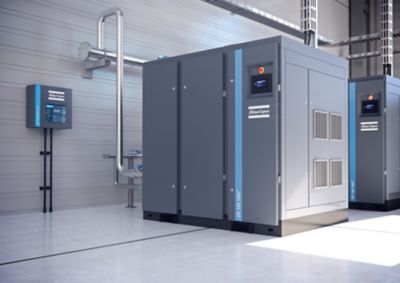Estimated reading time: 3 minutes
The electronics industry has mostly been about building devices that are an assembly of transistors, capacitors and diodes. The electrons need to move to transmit information at a high rate of speed on a board. This board is getting smaller and smaller to compose devices that are now moving from micro to nano.
The electronic and semiconductor industry is highly competitive. They must all comply with requirements of high quality, reliability and durability for the demand worldwide. It has therefore become critical to improve the whole assembly process by also reducing the cost of manufacturing.
One way to reduce cost is to reduce defects. Nitrogen usage plays a key role in the electronics industry from the actual manufacturing to the recycling of the devices.
Nitrogen Generation Applications in Electronics Manufacturing
Soldering
Soldering is a key process in the electronic industry. During this process, two or more components are joined together by melting and putting a filler metal into the joint. The filler metal has a lower melting point than the adjoining metal.
Heat is applied to the parts to join and this causes the solder to melt and to bond to the workpieces. In electronics soldering connects electrical wiring and electronic components to printed circuit boards by utilizing a metallic alloy substance called solder.
Parts Cleaning
Most of the electronics companies have moved from tin to lead free soldering. Lead free soldering creates excess waste of product around the surface of the molten solder, this is called dross.
This dross has a negative impact on the quality and reliability of the components therefore must be removed by cleaning. This extra step on the production is costly. The usage of nitrogen during the process reduces by at least 50% the presence of dross.
Adhesive Blanketing
The presence of oxygen can be hazardous because of the potential of chemicals reactions, oxygen also weakens the joints. The micro components of an electronic device must have a strong bond which will increase their durability and reliability. Nitrogen is a clean, dry, inert gas that creates a safe environment and strong adhesive bonds. Nitrogen is therefore widely used for blanketing to help increase the adhesion in the electronic and semiconductor industry.
Electronics Recycling
There are a large amount of electronic devices that are used daily. Replacing an old device for a new one is common practice instead of repairing it. Therefore, the recycling of electronics has become a huge industry.
Multiple materials can be recovered from these components such as precious metals, silver and even gold. In recycling, nitrogen is commonly used to create an inert atmosphere in the recovery system and the shredding process. Nitrogen is also used in the furnace to remove oxygen in order to collect precious metals.
Benefits of Using Nitrogen Gas in Electronics Manufacturing
Interestingly, nitrogen is the number one gas that is consumed during the production of electronics. You might be asking yourself – why is nitrogen so popular to use in this industry? The benefits of using nitrogen gas in electronics manufacturing is multifold, but the top advantages are:
1. Maintains a Consistent Atmosphere. Nitrogen helps maintain a dry, clean, and – most importantly – inert atmosphere, which in in turn allows manufacturing to take place safely and consistently throughout the day.
2. Sharper Finishes. Nitrogen is ideal for producing extremely clean and crisp finishes, which are necessary for any type of electronic device being produced. In fact, nitrogen is regarded as the assist gas of choice when the cut must be top quality!
3. Reduced Dross. Dross, or solid impurities in molten metal, can be a significant issue when the soldering process occurs. Nitrogen lessens the amount of dross that is produced during soldering, in turn strengthening the solder.
4. Reduces/Prevents Oxidation. Oxidation is the formation of oxygen particles, which can be disastrous to electronics production if the particles become embedded between the solder and the materials. The solder will be weakened, and defects will occur. Nitrogen, however, reduces the presence of oxygen molecules – thereby increasing the strength of the solder and preventing oxidation from occurring
As the demand for electronic devices continues to grow, the demand for nitrogen in electronics manufacturing will also increase. To learn more about nitrogen and how nitrogen generation technology works, please visit us at www.atlascopco.com/en-ca/compressors/air-compressor-blog !

